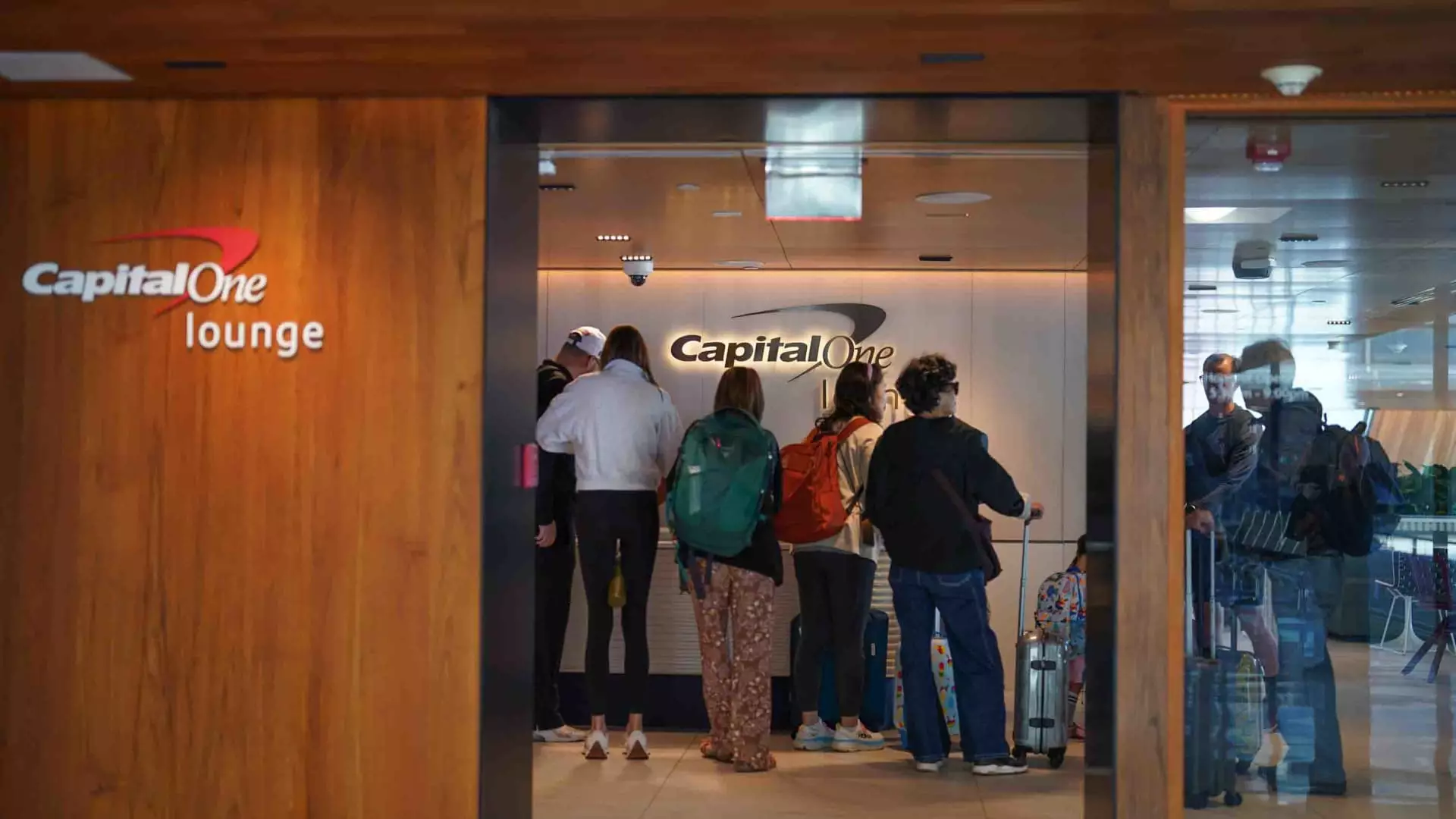In an era where travel is becoming increasingly accessible, the disparity between affordability and exclusivity is glaringly evident in the way airport lounges manage access. While airplane ticket prices dip, the cost of enjoying the tranquility and comfort of a lounge is soaring. Take Capital One, for instance: their recent decision to tighten lounge access comes as a shock to many, particularly families or friends traveling together. With a new structure that requires primary cardholders of the Venture X and Venture X Business cards to fork over substantial fees for additional guests, it’s clear that the value proposition is shifting toward a more elitist horizontal.
By instituting a $125 annual fee for a second cardholder and charging guests $45 per adult and $25 for minors, Capital One is sending a clear message—comfort is now a costly privilege. The sentiment seems in stark contrast to the primary objective of these lounge services: to offer a sanctuary for weary travelers. For families looking to travel together, the once treasured perk of lounge access is morphing into a farcical financial burden, commodifying the very essence of relaxation.
Quality of Experience Deteriorating Under the Weight of Popularity
It’s not just about who can get in; it’s about what experience awaits them. Capital One’s spokesperson remarked, “It is important to us that we maintain a great airport lounge experience.” However, how can this be achieved when overcrowding becomes an inevitability? Other established credit card giants, such as American Express and Chase, have implemented similar restrictions, reflecting an industry-wide trend where lounges—once considered exclusive hideaways—have become bustling social hubs.
Henry Harteveldt, founder of Atmosphere Research Group, argued that lounges are now “victims of their own success.” With popular demand soaring, lounges risk losing their essence—they are becoming micro-replicas of the crowded terminals they aim to provide an escape from. This irony not only dilutes their charm but also creates an uncomfortable atmosphere for those who seek solace before their journeys. Instead of gradually increasing fees, the focus should be on managing accessibility and the overall experience.
Classism in Access and the Burden on the Middle Class
As we navigate this evolving landscape of air travel, it begs the question—what about the average traveler? The new access policies favor the affluent, navigating toward a world where lounge access is tied to high spending thresholds. The requirement to spend $75,000 annually to enjoy complimentary guest privileges is a staggering move that inherently limits access to those who can afford it. Additionally, with American Express leading the charge in the luxury space, we’re witnessing an alarming trend toward the normalization of privilege.
This commodification of relaxation contributes to a growing class divide in travel. Where once you could find respite with a loved one in a cozy lounge, now you must weigh the financial implications carefully. Instead of fostering community among travelers, the lounges may inadvertently foster an exclusionary ecosystem, benefiting only a select few.
Corporate Responsibility and the Need for Change
In an age where corporations claim to be socially responsible, it feels hypocritical for credit card companies to latch onto exclusivity while ignoring the changing landscape of consumer travel. With so many families taking to the skies, why are we not prioritizing inclusive access over profit margins? The market speaks clearly: luxury shouldn’t always come with outrageous fees.
Furthermore, the pivot toward accessibility should not be influenced solely by bottom-line motivations; it must consider the heritage of flight and travel. Many of us have cherished memories associated with travel that aren’t solely bound to first-class seating or deluxe lounges. The sharing of experiences creates a sense of community, and lounges could and should be part of fostering this spirit.
As stakeholders in the travel industry’s future, it is our responsibility to advocate for an environment where lounge access is viable for families and the everyday traveler alike. The trends unfolding in lounge access highlight a need for a more inclusive approach to travel that reflects the diverse needs of travelers who push the industry’s success every day. Is it too radical to expect lounges to serve as genuine sanctuaries rather than elitist hubs? This turning point may define the very fabric of travel in the years to come.

